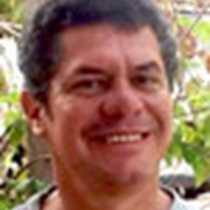Santa Cruz Island has the largest human population of all of Galápagos. It is where the Charles Darwin Research Station is located, which is where the captive breeding program for giant tortoises and land iguanas got started. With these programs we have been able to restock the populations of giant tortoises in places where they became extinct. It is the pride of this Park to have been be able to repopulate areas that were affected by human activity.
The day started overcast and with garua or drizzle as we went to the research station. We visited corrals where tortoises from different morphological varieties are found and this allowed us to see how they come into being. How the environment shapes the animal as it adapts to it. Drier islands produce individuals that have lighter skin to repel the excess heat, while wet islands favor individuals that have darker skin and larger body mass. Our first corral had tortoises from Wolf Volcano on Isabela Island; these are hybrids from the Pinta subspecies that Longsome George was from. From this stock we will get offspring to repopulate the island as George was the last one from his kind.
The second corral had tortoises from Hood Island; these are the ones that gave us our Galápagos name, which refers to the saddle shape of their shells. The shells have been deformed to allow their necks to stretch further and selection favors those with the longer necks. Drier islands produce longer necks in the tortoises.
In the afternoon we visited the highlands to see dome-shaped tortoises in the wild. With this visit we saw the two extremes in the shape of tortoises and allowed us to better understand the consequences of evolution in the shape of the animals.







